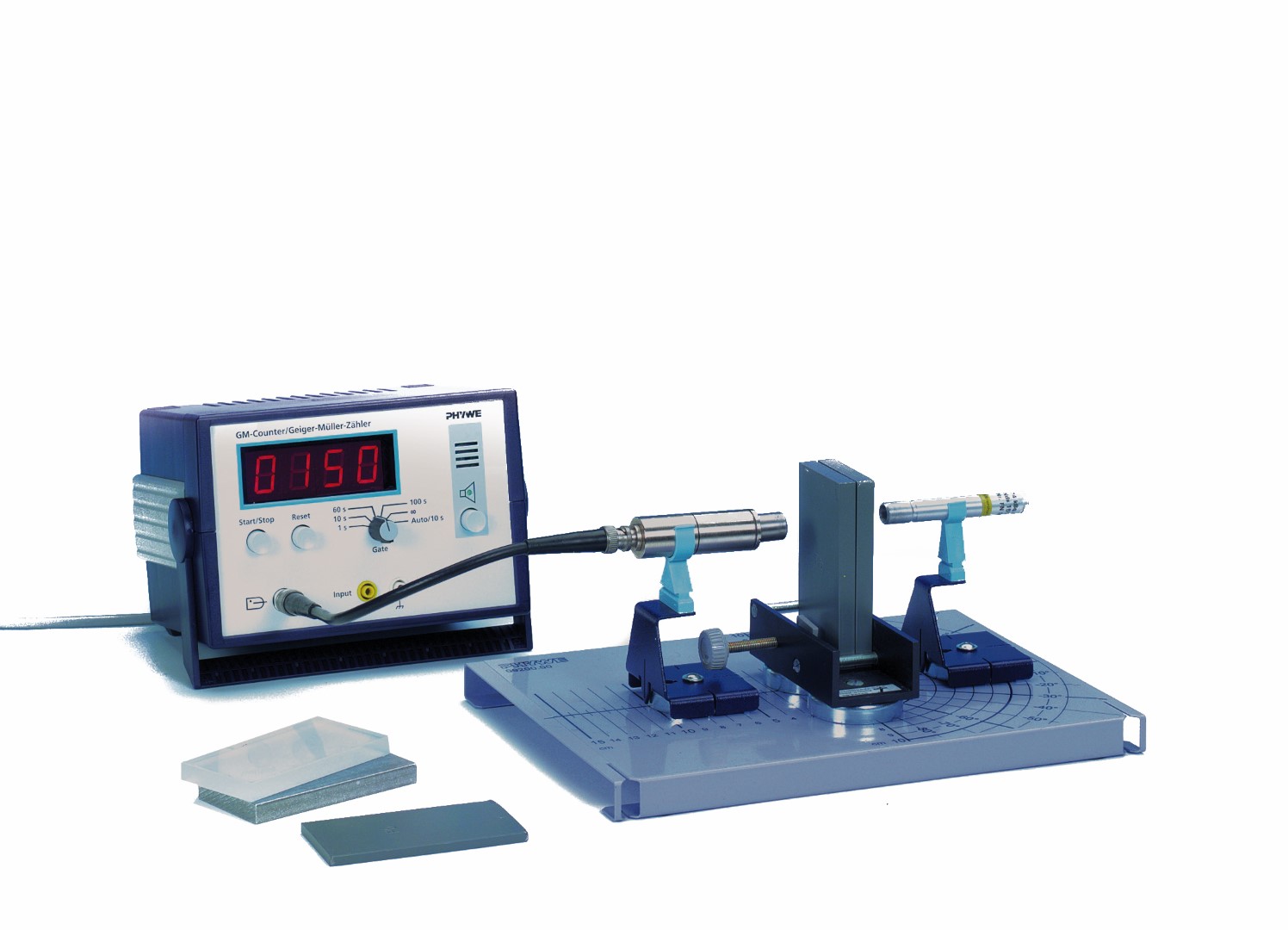Principle
The inverse square law of distance is demonstrated with the gamma radiation from a 60-Co preparation, the half-value thickness and absorption coefficient of various materials determined with the narrow beam system and the corresponding mass attenuation coefficient calculated.
Benefits
- Basic experiment in nuclear physics
- Showing two fundamental laws: Inverse square law and absorption
- Classical version with GM Counter for better understanding
Tasks
- To measure the impulse counting rate as a function of the distance between the source and the counter tube.
- To determine the half-value thickness d1/2 and the absorption coefficient of a number of materials by measuring the impulse counting rate as a function of the thickness of the irradiated material. Lead, iron, aluminium, concrete and Plexiglas are used as absorbers.
- To calculate the mass attenuation coefficient from the measured values.
Learning objectives
- Radioactive radiation
- β-decay
- Conservation of parity
- Antineutrino
-
g- quants
-
Half-value thickness
- Absorption coefficient
- Term diagram
- Pair formation
- Compton effect
- Photoelectric effect
- Conservation of angular momentum
- Forbidden transition
- Weak interaction
- Dead time

